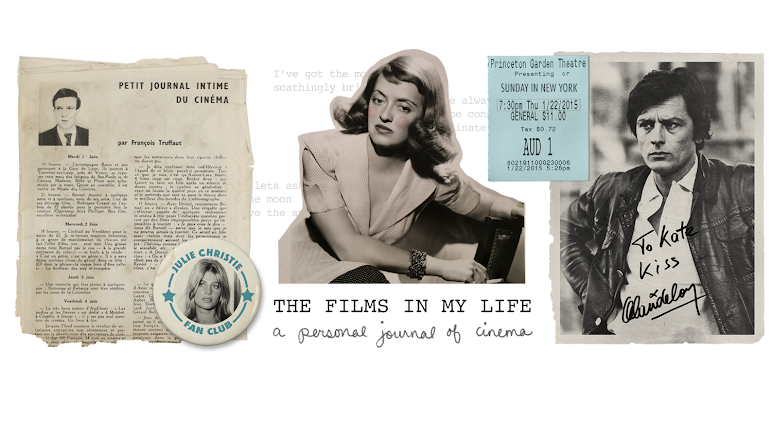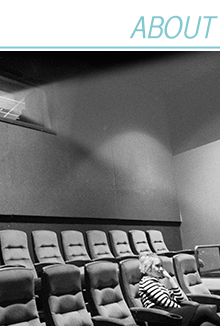Ida Lupino
September 02, 2010
by K.C.
of Classic Movie Blog
guest blogger
There are few artists who have made as rich a contribution to movies and television as Ida Lupino. She would be among the greats for any one of her major accomplishments, be it as a diversely talented actress, a director and producer of gritty, hard-hitting movies or as a prolific and efficient television director. That she was one of the first women to have a successful career behind the camera only adds a new dimension to an already impressive legacy.
Ida was immersed in show business from the moment she was born in London, England, on February 4, 1914. The Lupino acting dynasty stretched back to the Renaissance. Her father, Stanley, was a popular London music hall comedian and her mother, Connie, was an actress. True to her family history, young Ida would write and perform plays for the theater people who frequented her parent’s home.
By the age of eighteen, she had made her first appearances in British films and studied at the Royal Academy of Dramatic Arts. Hollywood soon took notice, and she eagerly accepted an invitation from Paramount Studios to test for the title role in Alice in Wonderland. However, upon her arrival in Los Angeles, it was clear that precocious, bleached-blonde Ida was too sophisticated to play a little girl. She was instead cast in the racy comedy, Search for Beauty (1934), which was a modest success.
Ida’s image in the thirties was that of an apple-cheeked, lively bombshell. Though she had acting chops, she found herself bouncing from one lightweight role to another. Near the end of the decade, Ida finally caught a break with her intense, damsel-in-distress supporting performance in The Adventures of Sherlock Holmes (1939).
Feeling encouraged, Ida stole the script for The Light That Failed (1939) and memorized the coveted part of streetwalker Bessie Brooke. She then cornered director William Wellman in his office, demanding an audition. Her bravado paid off. She won the role and changed the course of her career with a popular and critically-acclaimed performance.
Ida greeted the forties with a more sophisticated, hard-boiled image. She slimmed down and embraced her natural dark hair color. She also signed a contract with Warner Bros. In a tightly-wound performance as the neurotic, murderous wife of a trucking magnate in They Drive by Night (1940), Ida stole her first picture for the studio.
This was the richest period of Ida’s career. She displayed remarkable versatility--from her portrayals of struggling innocents in High Sierra (1941) and Moontide (1942), to the tougher, more world-weary noir queens of The Man I Love (1946) and Road House (1948). Still, she had to constantly fight off the roles rejected by studio queen Bette Davis.
In the late forties, determined to control the course of her career, Ida started Emerald Productions with then-husband Collier Young. Emerald’s first production, Not Wanted (1949), was the story of a young girl who is impregnated by a traveling musician and decides to give the child up for adoption. When director Elmer Clifton had a heart attack days before shooting was to commence, Ida stepped in to direct the film. Thanks to her efficiency and skill (acquired from careful observation on the sets of her movies), the low-budget flick was completed under budget and was a modest commercial success. Though the production had been Ida’s from day one, she refused to accept a director credit.
Ida and Collier then moved their operations to the Filmmakers Company. There Ida continued her work behind the camera. She tackled tough subject matter, such as rape in Outrage (1950) and bigamy in the aptly-named The Bigamist (1953) (in which she also starred). Ida also showed an early flair for suspense with the chilling thriller-noir The Hitch-Hiker (1953), her most successful movie as director. Filmmakers was sold to RKO in the early fifties, where it folded due to poor management. Collier and Ida also divorced, though they would still work together professionally.
In the mid-fifties, Ida began a prolific career as a television director. Building on the promise she showed with The Hitch-Hiker, Ida became known as the "Female Hitch" for her taut camera work in dramas, westerns and thrillers such as The Twilight Zone, Alfred Hitchcock Presents and The Untouchables. She also helmed the odd comedy, including Gilligan's Island and Bewitched.
Ida knew her male coworkers disliked answering to a woman, and so on her sets she presented herself as an easygoing, maternal figure. Rather than give an order, she would say that “mother” had a few suggestions for a scene. Her tactics were not only successful, but brought her great admiration from crew members.
Though Ida made few movies in the fifties, her performances from this era were among some of her best. In On Dangerous Ground (1951), The Big Knife (1955) and Private Hell 36 (1954), she created characters with soul who were tough, but also achingly vulnerable. She also accepted a regular gig on Four Star Playhouse (for which she was Emmy-nominated) and began a prolific television acting career that would include guest appearances in everything from Batman to Charlie's Angels. She even had a short-lived (and also Emmy-nominated) run co-starring in the comedy series Mr. Adams and Eve with then-husband Howard Duff.
Ida directed her last feature movie, The Trouble with Angels, in 1966. She made the last of her movie appearances in the seventies, most notably as a lead in Junior Bonner (1972) with Steve McQueen. She reluctantly gave up acting after My Boys are Good Boys in 1978. She wanted to work, but good parts were scarce for a woman of her age.
In the early years of her retirement, Ida struggled to find happiness. She felt lost without a creative outlet, and longed for romantic companionship (Duff had left her in 1972—the pair divorced in 1983). With the encouragement of friends, she finally established a happy routine consisting of days by the pool and riding horses. Failing health led to a short bout in the Motion Picture, Television Country House. Ida then spent the remainder of her years in a lush Hollywood apartment, surrounded by friends and admirers. She suffered a stroke in 1995 and died in August of that year.
Late in her life, Ida resented that the industry had not properly recognized her remarkable contributions to her craft. Today, she has finally gotten her due. Many of her features are available on DVD and she has been the subject of numerous revivals, books, and articles.
There has never been an actress or director quite like Ida Lupino—her type lasted through her lifetime and died with her. She was a unique treasure.
Subscribe to:
Post Comments (Atom)



















11 comments:
I just watched my very first Ida Lupino film last night: On Dangerous Ground. So this seems perfectly timed in my life as I'm developing an interest in her. Great artwork Kate and great post KC!
The paragraph about her struggling to find happiness in her later years makes me so sad. At least she fought for happiness instead of giving into misery. That's admirable to say the least.
I LOVE THIS POST!
Ida was such a brilliant person.
I've seen her more in TV than films, but I get SO excited to see her name in the credits; whether as actor or director.
I was watching a Fugitive episode just the other day that was "directed by Ida Lupino".
I must say though, my FAVORITE role of her's has GOT to be in Wild Wild West! Haha! She's plays an evil Dr. Frankenstein-type scientist trying to kill President Grant. BRILLIANCE.
Great post!
And Kate, THE ART IS AMAZING!
Nice post, Kate. I love Ida and agree with everything you've written. I love her performance in "The Hard Way." She's terrific.
Great post, KC, and fantastic art, Kate!
Ida's a personal favorite, love her mini-run of They Drive By Night, High Sierra, Sea Wolf, and Out of the Fog when she really got going at Warner's. What a talent, and what a multi-faceted career!
This post is FANTASTIC! :) Very well written, and I love the artwork!
Also, this may have just been a typo, but Ida was born in 1918, not 1914.
I like the way Millie described her "a brilliant person". I completely agree!
An Ida Lupino film is always worth watching. She is always intriguing, very pretty and not conventional looking at all. She was versatile and adaptable. Grand lady. Kind of like Stanwyck.
A great post, K.C.! Ida Lupino was a remarkable woman. I was always amazed by the fact that not only she was a great actress, but one of the earliest female directors as well (I even wrote a post on that subject)!
Raquelle--Oh you are so lucky to be able to see all those Lupino flicks for the first time. You've got to watch Road House; I think you'd like it. It does sadden me to think how Ida struggled in her later years, but I hope she truly did find contentment in the end.
Millie--Thanks! I'm the opposite, I need to see more of Lupino's TV work. I'm dying to see that Wild Wild West ep. now!
South Loop Connection--I've still got to see the Hard Way. I think I might have it on my ClassicFlix queue somewhere. . .
Cliff--I love the raw energy she had in her Warner's days. Even when she was relatively subdued, like in High Sierra--she was still so vivid.
Jean--Thanks, and I love your Ida blog too! I wrote the first version of this post years ago for another site. At the time, there was some dispute as to what her true age was. Her biographies were split between 1914 and 1918. I did some digging though--and it looks like 1918 has now been proven as the true date. So it wasn't quite a typo--but thanks for the update!
Panavia--I think Ida showed her vulnerability more freely than Stanwyck, but it seems that under the skin these two women were very similar: tough, smart and warm-hearted.
Mecurie--Thanks! I'd love to read your Ida post. I'll have to come by and take a look.
Oh and Kate--thanks for having me as a guest! I pretty much did it because I wanted to see what your Ida art would look like, and I was not disappointed. I love the moods you capture in these great photo/overlay things you create. This picture is the soul of Ida :-)
being a warner bros studio guy Ida is of course a big fave of mine and i would put her in the same class as Bette, Olivia and Barbara for acting chops. she was so beautiful too *sigh*
a few other films well worth seeing for Ide's are Out of the Fog, The Hard Way and The Sea Wolf.
in some ways she is similar to Ann Sheridan....both got their start at paramount but really found their niche at Warner's, Ida of course being taken more seriously much sooner than Ann was. great post, nice to see all these write ups about Warner Bros studio players :)
I'm still trying to imagine how her career might have changed had she indeed been cast as Alice (instead of Charlotte Henry) in the 1933 "Wonderland," particularly in light of what would instead be her first U.S. film, "Search For Beauty." Unless the idea had been to create a pre-Code Alice (think about that concept!), Ida likely would have been much too sexy for the role.
Post a Comment